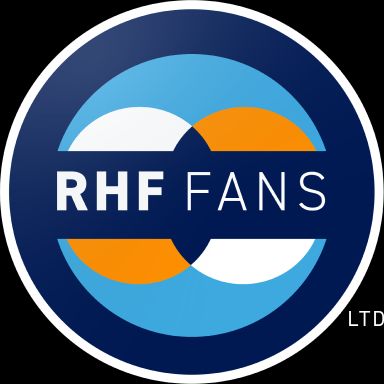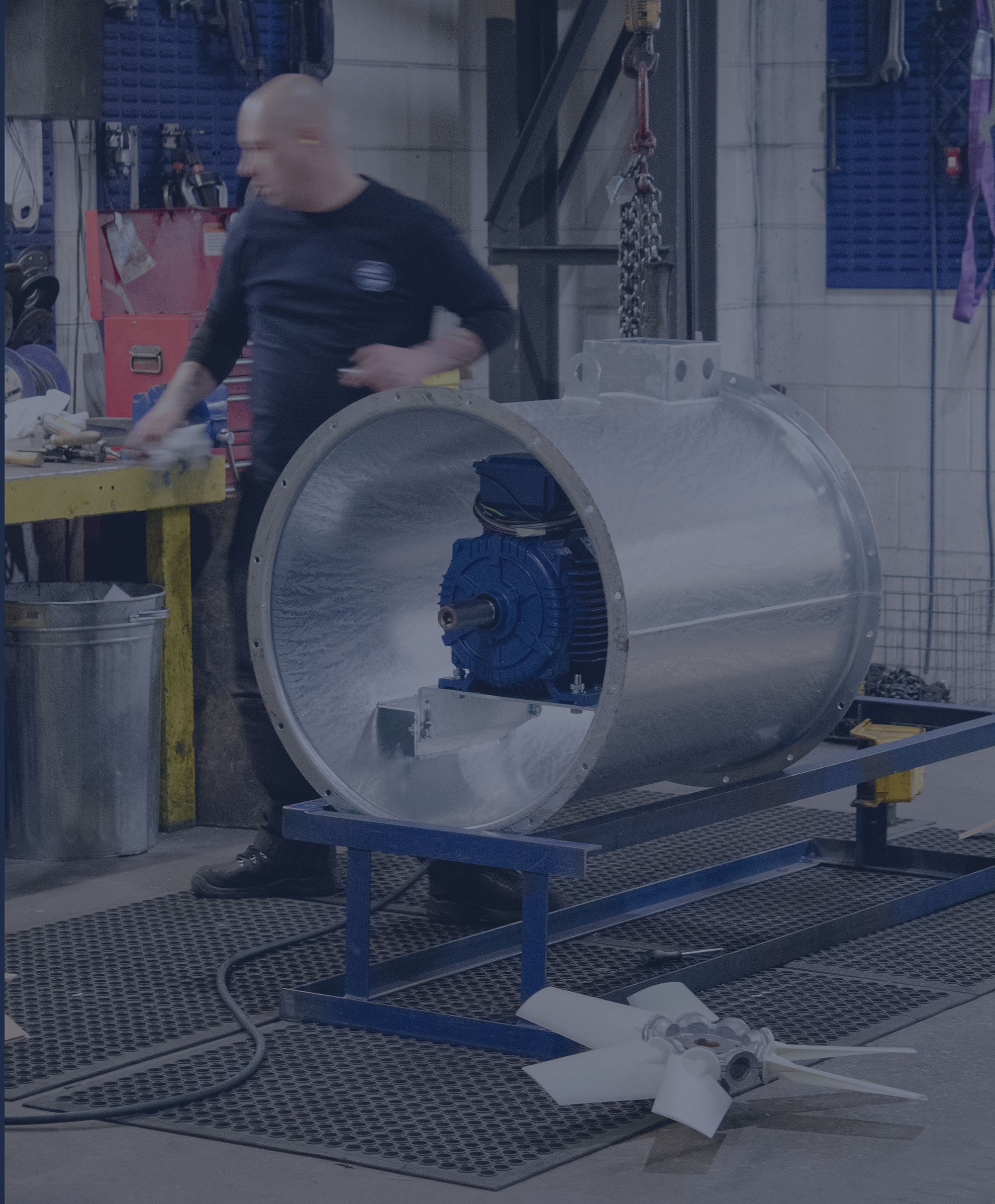
Need-to-Know Industrial Fan Maintenance Tips
Published on 20 Feb 2025
Centrifugal Fan Maintenance Tips
An industrial fans’ primary function is to supply substantial gas or airflow to different industrial processes. Designed with multiple blades these fans vary in size and efficiency based on their application. Beyond cooling, industrial fans assure safe working conditions by preventing heat buildup and maintaining clean air. However, industrial fans also require consistent upkeep to ensure their performance and lifespan due to long-term use in challenging environments. Without them, workplaces could become hazardous and affect productivity and employee health.
Centrifugal fans operate by increasing the pressure of the air stream using centrifugal force. They are suitable for applications where higher pressure or airflow direction changes are needed. If your business is using a centrifugal fan, follow these maintenance tips:

Keep Them Clean
Cleaning the fan impeller and air inlet regularly is very important. Since centrifugal fans work in industrial environments, their impellers and air inlets are prone to accumulation of dust and debris. These build-ups affect the fan's operating efficiency and even cause failure.
Help Them Breathe
Checking and replacing the filters on a regular basis is another tip that should make your fan maintenance checklist. The filter's job is to keep dust and debris out of the fan internals and safeguard its normal operation. Naturally, the filter becomes clogged over time, which can starve the fan of air, reducing airflow.
Complete Fan Health Checks
As with any maintenance, regularly inspecting your fans will help determine if they are operating correctly. The motor and electrical components are a good place to start. The motor is the power source of the fan, and the electrical components are the key to controlling the operation of the fan. Regularly check the motor and the tightness of the connections of electrical components so that potential problems can be discovered and repaired in time.
Routinely monitoring vibration levels is another good way to identify potential issues with the fan. An increase in vibration levels could indicate an alignment or balance issue with the fan’s impeller. Vibration could also indicate a build up on the impeller blades which would require removal / cleaning.
Check motor alignment, belts, and pulleys for proper tension and wear. Misaligned or worn components can reduce efficiency and increase energy consumption.
Keep Things Moving Smoothly
Centrifugal fans have bearings in the motor and some have shaft bearings, so if there is a lack of lubrication or improper lubrication, the bearing will wear, heat, or even be damaged. Lubricate and inspect bearings according to the manufacturer's recommendations to prevent friction and overheating.
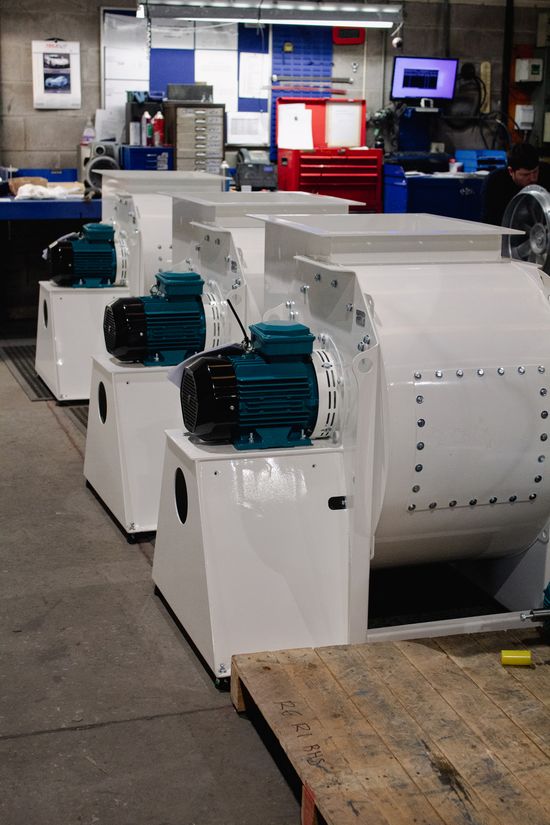
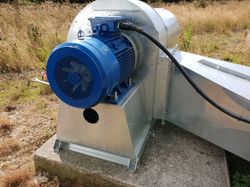
Axial Fan Maintenance Tips
Motor overheating is one of the most common problems consumers have with axial fans. This usually happens when dust and dirt obstruct the fan blades or when the fan runs for extended periods without sufficient airflow. A fan may eventually fail if it must use more effort than is necessary to move air since it will produce more heat. Cleaning the blades and surrounding areas (including motor cooling disc) is essential to preventing motor overheating and ensuring the fan has access to a constant flow of air.
Check the fan blades frequently for any accumulation of dust or grease that can obstruct airflow.
Beware of Overloading
Keeping an axial fan from overloading is another helpful maintenance tip. A significant strain on the motor might result from overloading, which happens when the fan is asked to handle more airflow than it can take. Choosing a fan that is the right size for the area it is meant to ventilate is the best practice to avoid this situation. A fan that is too big could waste energy and be ineffective, while one that is too small for the area would be overworked. By selecting an axial fan that meets your demands, you can ensure your system runs at peak efficiency and prevent undue strain on the motor.
Inspect Axial Bearings
Keep your axial fan running smoothly by taking care of its bearings. These components need regular lubrication, just like the bearings in centrifugal fans. Remember to inspect them for wear, too, as worn-out bearings lead to overheating and costly failures.
Run Performance Checks
Avoid potential defects by regularly checking your fan’s motor performance. Monitor voltage and current levels; any deviations could signal trouble with the electrical components. If your axial fan uses belts and pulleys, don’t overlook them. Inspect for wear and ensure proper tension. Worn-out belts or loose tension reduce efficiency and lead to more significant problems down the line, these also applied to centrifugal fans that are belt driven.

Be Consistent with Cleaning
Industrial fan systems must be operated with energy efficiency by taking into account the requirements of both the system as a whole and its individual pieces of equipment. By considering the interactions between the many parts, a "systems approach" moves the emphasis from the parts to the system's overall performance.
RHF Fans’ Smoothflow Technology is Revolutionising Fan Efficiency
At RHF Fans, we have taken fan design to the next level with our new technology, which addresses the core challenges of energy consumption and airflow optimisation with a whole systems approach. We have developed a more sophisticated design for our impellers and air inlets called "Smoothflow." This characteristic will become increasingly sought after as it ensures that there is less turbulence while the fan runs, which in turn results in less noise. However, the ultimate advantage of our enhanced inlet and impeller solution is increased efficiency, which naturally results in lower energy and consumption expenses. What characteristics of Smoothflow, then, contribute to its success as a design?
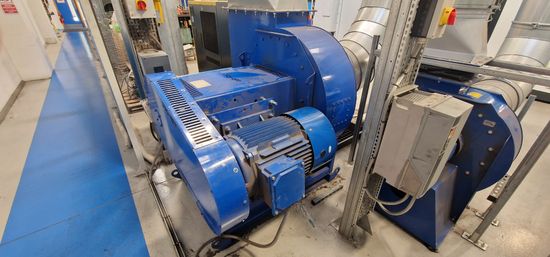
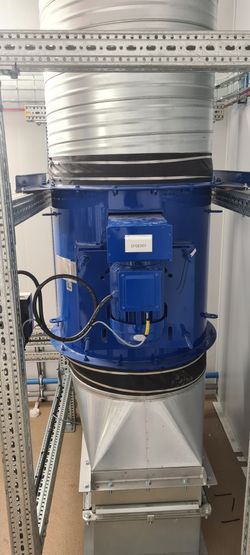
tips
General Fan Maintenance Must-Dos
-
Schedule Routine Inspections
Stay ahead of breakdowns by setting up a maintenance schedule based on troubleshooting guidelines provided by the fan manufacturer. Regular check-ups help catch issues early, saving you time and money.
-
Use Approved Parts
Always choose appropriate and reliable manufacturer-approved parts when it's time for replacements. Cheap, substandard components might seem like a bargain, but they can seriously impact performance and reliability.
-
Keep Records
Good maintenance starts with good documentation. Track inspections, repairs, and part replacements to monitor performance trends and make smarter maintenance decisions in the future.
Trust RHF Fans for Your Maintenance Needs
In short, maintaining centrifugal and axial fans is the key to ensuring peak operation and prolonging their service life. Industrial fan troubleshooting can be a complicated operation, but you can guarantee ideal fan performance and increase the lifespan of your fan system by putting these fan maintenance tips into practice and carrying out a routine maintenance schedule.
As a professional industrial fan solution provider, RHF Fans provides customers with high-quality products and excellent ongoing support, including a troubleshooting guide which is easy to access on our website. Contact us for more insights on fan performance or to discuss maintenance strategies tailored to your needs. Let's keep your ventilation systems running smoothly!
